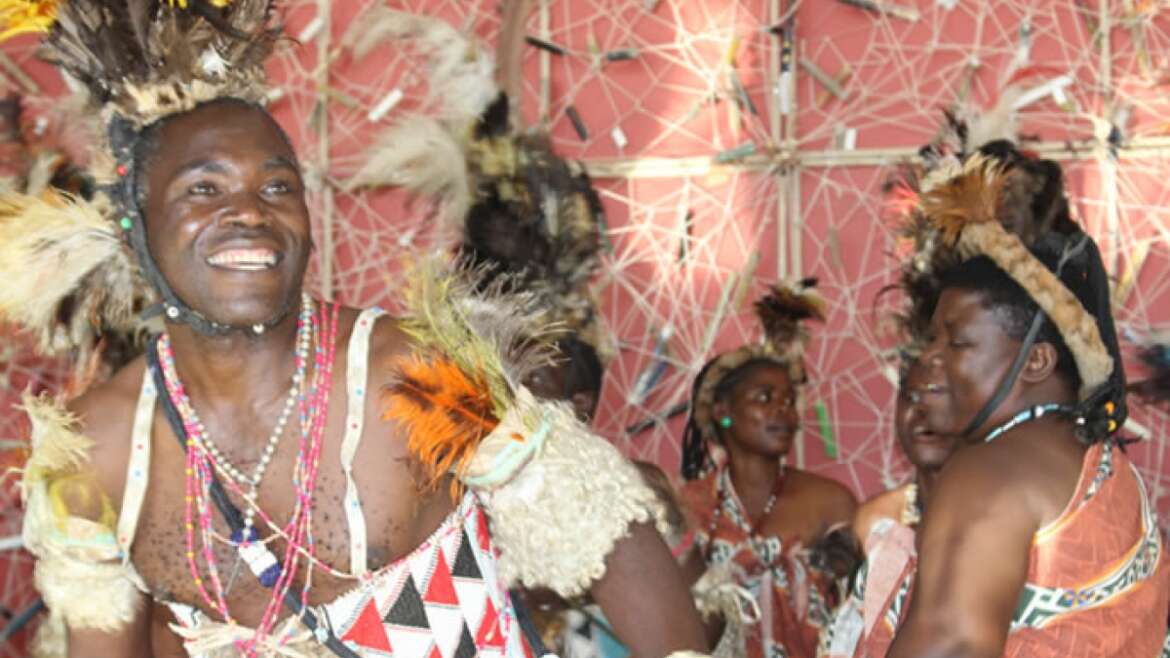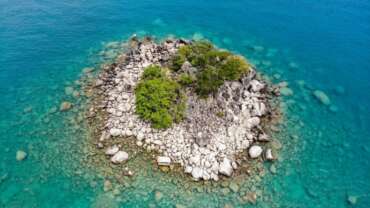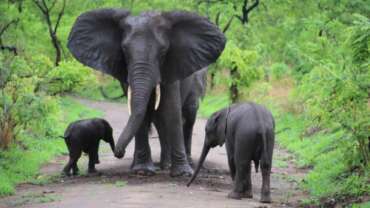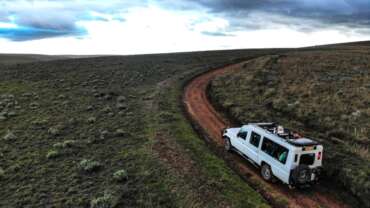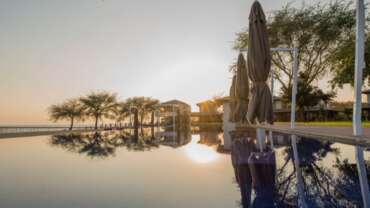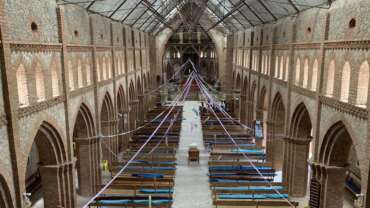Experiences in Malawi
Lake Malawi
Lake Malawi is the jewel in the crown of the country’s tourist attractions. This is the ‘inland sea’ of the otherwise land-locked Malawi. This vast body of crystal clear freshwater fringed by beaches of golden sand is not only a scenic wonderland but it provides water sport opportunities for those looking for something beyond sun, sand and swimming. As one of the first Europeans to set eyes on the Lake Malawi over 150 years ago, the missionary-explorer Dr David Livingstone christened it the ‘Lake of Stars’.
Its approximate dimensions are 365 miles north to south and 52 miles broad, hence another nickname: ‘Calendar Lake”. In the north, Lake Malawi is quite extraordinarily deep: 2300 ft/700 m, plunging well below sea level. This reflects the enormity of the natural faulting of the Great Rift Valley, which is the origin of the Lake. The width of the lake’s shorelands vary from nothing to over 25 kilometres (16 miles), the edge of the Rift Valley rising steeply in places and more gently in others.
Because of its rich fish harvest, the Lake plays an important part in the economy. Fishing villages are scattered along the shore and the traditional industry and practices are an attraction to visitors. Access to the Lake is possible along much of its length but it is often necessary to take a short detour off the main roads in order to reach the beaches. Despite the villages, there are still very long stretches of totally uninhabited golden sand lakeshore, lapped by crystal clear waters.
Lake Activities
Lake Malawi is a wonderland that offers all types of water sports and activities expected of any tropical beach destination. There are boats and boards of all types available to have fun with and to explore the waters, islands and beaches of the lake.
When it comes to small boats, the Lake is best known for its kayaking & sailing options with kayaks & canoes available at most beach lodges and even the option to take on longer expeditions along the lakeshore. A few lodges have small sailing boats for personal use or larger ones for a leisurely cruise. The crystal clear water of Lake Malawi make it an ideal location for snorkelling, and donning a mask will give immediate access to the colourful kaleidoscope of tropical fish that live in the Lake and feed from the rocks along the shore. For those who wish to go that little bit deeper, there are a number of PADI registered dive schools along the lakeshore who offer great value scuba diving, including full courses to learn how to dive. One or two lodges even offer water skiing and sailboards and paddle boards are to be found at others. For the less energetic, boat trips range from the famous mv Ilala lake ferry to sailing in an ocean-going yacht. Cruises into the upper reaches of the great Shire river are also possible.
Places to Visit on Lake Malawi
There are a number of places of interest to visit along the length of the lake, and good lodges to be found, with a few collections in areas of particular beauty.
In South Malawi, between Mangochi and Monkey Bay is a long line of wonderful beaches backed by a variety of accommodation. This Mangochi Lakeshore has the Lake’s greatest concentration of lodges and hotels. Monkey Bay is a functional port town, but round the headland is Cape Maclear and the Lake Malawi National Park, a UNESCO World Heritage Site and a veritable aquarium of tropical fish. In recent years, a number of high quality lodges have been built in this area.
Central Malawi’s Senga Bay is another place where there are a number of lodges & hotels, and it benefits from being the closest point on the lake to Lilongwe. Just off shore are the 3 Marelli Islands, which mark the northerly extent of the Lake Malawi National Park.The stretch between the historic Nkhotakota and the sugar estate town of Dwangwa has a smattering of lodges.
Another concentration of lodges is found on the Chintheche lakeshore in North Malawi, which has some stunning beaches. Nkhata Bay is primarily a port town, but has grown as a centre for independent travellers. The Northern Lakeshore beyond Chitimba has fewer lodges, and Karonga, an important archeological centre, is the only town of note before reaching Tanzania. Across the lake, into Mozambiquan waters, is Likoma Island. Not only does it have some beautiful beaches, and accommodation, but also a missionary-built cathedral the size of Winchester’s. A nearby stretch of the Mozambique shoreline, Manda Wilderness, is a 120,000 hectare community reserve of unspoilt wilderness and white sand beaches.
Malawi’s Landscapes
Malawi has a massive diversity of beautiful landscapes and scenery. The highest peaks in Malawi touch 10 000ft (3 000m) while the lowest point is barely above sea level. This range of altitudes in a small area help to make the landscape of Malawi one of the moist varied in all Africa. It is generally a green, lush country, with plateaux, highlands, forests, mountains, plains, escarpments and dramatic river valleys.
Outdoor Activities
The variety of scenery is a major attraction to visitors and many of the highland areas and forest reserves have good accommodation options. Malawi’s wonderful landscapes can be enjoyed and experienced through variety of outdoor activities that are available across the country. Most of the highlands have trails available for walking and trekking through areas of amazing unspoilt natural beauty, and it’s possible to do treks lasting a number of days as well as simple, unchallenging walks of an hour or so. For those intend on reaching Malawi’s higher peaks, there are a few opportunities for climbing (and abseiling)
Cycling and mountain biking and allow more ground to be covered and more to be seen than when exploring on foot. A few lodges have bikes for hire and with Malawi’s modest size, most local tour operators can set up itineraries using on cycling as the main means of transport. Horse riding is also available at a few well run stables dotted around the country and is another way to enjoy the surrounding scenery, that can be both relaxing and thrilling!
Malawi is blessed with a number of rivers that flow throughout the year and those, along with Lake Malawi and a few smaller lakes and dams, provide some opportunities for fishing.
Scenic Places to Visit
Rift Valley
The Great East African Rift Valley System extends into Malawi and provides the vast chasm that Lake Malawi fills. The whole lake is a sight to behold, but the Lake Malawi National Park covers particular waters, shoreline and islands at the southern part of it. On the Mozambican side of the lake, the Manda Wilderness Reserve is a protected area of stunning natural beauty. The Rift Valley extends to the south of the country following the Shire River that drains the Lake and soon flows through Liwonde National Park. South-west of Blantyre, this mighty river, en route to the Zambezi, descends to the Lower Shire Valley which is home to three protected parks & reserves including the picturesque Majete Wildlife Reserve and Mwabvi Wildlife Reserve, which is little visited but has some unique rock formations. The flatter area at the southern end the Lower Shire Valley is an important wetland, Elephant Marsh.
Central African Plateau
To the west of the Lake and either side of the Shire Valley in the south, is the Central African Plateau. The transition from Rift Valley floor up to the Central African Plateau is characterised by a series of dramatic escarpments, such as at Nkhotakota Wildlife Reserve, a protected area of rugged, unspoilt wilderness. The Central African Plateau itself is gently undulating land between 1600ft (490m) and 5000ft (1500m), with the occasional lake (such as Lake Chilwa) and punctuated by more dramatic hills and forests.
Highlands
It is the widespread highlands and forests that provide the most impressive of the Malawi’s varied scenery. Up where the air is fresh and cool are clear mountain streams, heaths, rolling montane grassland and evergreen forests.
The southern part of Malawi has the best known highlands – Mulanje Massif and Zomba Plateau. The former is a massive wilderness plateau of syenite granite rising from the Phalombe Plains. It has a number of peaks, including the highest in both the country and the whole of central Africa: Sapitwa, at 3000 metres (10,000 feet). The tea estates that stretch west of Mulanje as far as Thyolo, are also wonderfully scenic, with the privately restored Chimwenya Game Park protecting a beautiful area of indigenous forest even closer to Blantyre. Zomba Plateau is not as high as Mulanje, but none the less impressive. It is slab-like with a gently undulating plateau top which is accessible by road.
The Dedza-Kirk Highlands extend the rise from the Rift Valley on its western edge between Blantyre and Lilongwe. The quaint forestry town of Dedza is overlooked by a mountain of the same name and is nearby the UNESCO World Heritage site of the Chongoni Rock Art. The northern part of these highlands is marked by the Dedza-Salima Forest Reserve and then the Thuma Forest Reserve. South-west of Lilongwe, the Dzalanyama Forest Reserve covers a range of hills at the border with Mozambique. The Dowa Highlands north of Lilongwe have their most notable peaks at Dowa and Ntchisi Forest Reserve.
The Viphya Highlands – undulating hills swathed in evergreen forests – stretch north-south in north Malawi and reach the edge of the Rift Valley. Finally, in north Malawi is the Nyika Plateau, a rolling whaleback grassland plateau unique in Africa. Much of this highest and most extensive high plateau surface in central Africa is gazetted as the Nyika National Park. To the east of the National Park lies the historic Livingstonia Mission in its stunning setting, high on the Khondowe Plateau overlooking Lake Malawi.
Malawi’s Culture
Malawi’s greatest asset is its people. They are wonderfully friendly and warmly welcoming. All visitors are met with smiles and a truly genuine and long-lasting welcome. With a population of over 18 million, Malawi is one of the more densely populated countries of this part of Africa. Most of the population is rural, living largely in fascinating traditional villages.
Tribes
Many of today’s Malawians are descendants of the Bantu people who moved across Africa and into Malawi for hundreds of years up to the fifteenth century. There is a rich cultural mix in Malawi with the Chewa being the most numerous tribe. Others include the Yao, the Nyanja and the Maravi. In the north the Tumbuka are prominent. Each tribe has contributed to the modern Malawi scene, whether it be in dress or dance or language. Masks are commonly used in various dances and ceremonies and these are usually tribe-specific, the best known being the Gule Wamkulu, performed by the Nyau of the Chewa. Traditional (African) doctors still attract many people and the two main ‘modern’ religions, Christianity and Islam, frequently exhibit a continuing adherence to traditional beliefs.
Cultural Activities
All travel in Malawi will include some element of cultural experience and that often becomes the highlight of any visit. This is not so much colourful singing and dancing performances (though there is some of that), but more about natural interaction with local people that allow visitors to learn about daily life in Africa, and to make friends across continents. A visit to a local village can easily be arranged at most lodges or hotels all around the country, whether they are in a town, forest reserve, National Park or on the lakeshore. These are always real villages, whose residents have an established relationship with the lodge in question, and who welcome the interest from visitors in their daily life.
African markets are known for their colourful vibrancy and Malawi is no exception. The larger towns and cities have bustling markets that can be easily visited, and even clusters of roadside stalls in the rural areas offer a taste of the liveliness and friendly banter that come from making a purchase. As well as markets selling all manner of food and homeware items for the local market, there are also a few craft markets around the country that offer some of the high quality products produced in Malawi. Wood carving is a speciality and Malawi is know for its ‘Chiefs Chairs’ .
Although not yet major country attractions, Malawi has a few sites of historical interest as well as a few museums that give greater insights into the country’s history and history. And an opportunity for a ‘flavour’ of colonial times comes from the tea tasting on offer at some of the estates.
As a developing country in Africa, Malawi has a high proportion of its population that are in need of extra assistance in order to have opportunities in life that others around the world take for granted. As such, there are plenty of opportunities for its visitors to make a genuine, positive difference by getting involved in community volunteer projects.
Performances of Malawi’s traditional music and dance are offered to their guests by many lodges around the country, giving local performers the chance to showcase their energetic skills. But the country is also witnessing a growth in modern-day music and the arts. The big cities, especially Lilongwe are the places to catch the latest groups and performers, including some Malawian musicians who have now carved themselves international reputations.
Cultural Places to Visit
Village visits and day-today cultural interaction are available across the whole of the country and can be arranged by almost all lodges and hotels. Some which have established particularly strong links with their local communities include lodges in places that are visited primarily for reasons (lake beaches, highland scenery, wildlife safaris), but the cultural interactions still become the highlight. These include Viphya Plateau, Chintheche, Ntchisi Forest Reserve and Liwonde National Park. Similarly, community volunteer projects can be found around the country and can be organised through the local tours & safari companies, but there are particularly good opportunities at Viphya Plateau, Chintheche, Dzalanyama and Fisherman’s Rest just outside Blantyre.
Malawi has a few places of specific cultural and historical interest, including original mission stations and centres of excellence for handicrafts. Of its modern-day larger towns, Blantyre, Zomba and Mangochi have a number of historical buildings, monuments and museums. Lilongwe and Mzuzu are of interest for their markets and in the case of the latter, to see the division between the Old Town and modern Capital City as well as its growing music scene. If visiting Blantyre, take the time to visit The Society of Malawi. Situated in the historic Mandala House, the society protects a true treasure trove of the country’s history. With thousands of books and resources safely stored away, it provides an opportunity to find out a bit more about Malawi that perhaps many tourists don’t ever discover.
Along the Lakeshore, Monkey Bay and Nkhata Bay are bustling ports, whilst Nkhotakota is of historical significance and now has a renowned pottery. To the north, Karonga is the site of an interesting historical and archaeological museum. The link between missionaries and the Lake is strong, with sites of the Livingstonia Mission marked by graves at Cape Maclear and Bandawe, near Chintheche, before it reached its final and current location near Chitimba in the north. Across the Lake, Likoma Island is a wonderful place to interact with local people, and also see its magnificent missionary-built Cathedral – the same size as Winchester’s! Even further east, the Manda Wilderness Reserve on the Mozambique shore has been set up with the full involvement of, and for the benefit of, local communities and so is a great place to learn about and interact with those local communities.
Artistic skills, old and new are on show in and around Dedza. North of the town is the Chongoni Rock Art area, a UNESCO World Heritage Site and the densest cluster of stone age rock art found in central Africa. And at the edge of the town is the Dedza Pottery, where today’s artists and craftsmen can be viewed producing a variety of items then found all round Malawi or sold for export. Artistic skill is also on display at Mua Mission, almost directly down the escarpment from Dedza. Mua is a mission station whose students create the finest wood carvings in the country, if not the whole of Africa, and is also home to a fascinating cultural museum.
The large agricultural estates, sugar at Dwangwa and the Lower Shire Valley and tea at Thyolo are interesting places to visit also. As well as being able to see the daily workings, the tea estates in particular have fascinating colonial histories.
Malawi’s Sports & Wellness
Although Malawi makes a perfect adventure destination, it also has a number of sport and leisure activities available in parts of the country. There are a few golf courses dotted around the country and although the ‘country clubs’ in Lilongwe, Blantyre and Mzuzu have sand greens, there are a couple of very picturesque (all grass!) 9-hole courses in the south of the country. The golf course at Chimwenya Game Park, just to the south-east of Blantyre, has wildlife wandering the fairways. Whilst, on the Mangochi Lakeshore, the course at The Makokola Retreat lies alongside Lake Malawi and has hosted tournaments for international golf professionals.
For those looking for more leisurely relaxation, there are a few Wellness activities available and an increasing number of lodges and hotels have spas. Most of the larger city centre hotels have gym & spa facilities and a few of the lakeshore lodges have spas whilst some organise yoga retreats, including at the Mangochi Lakeshore, Marelli Islands, Chintheche, the Lake Malawi National Park and inland at Ntchisi Forest Reserve.
Other sports, such as tennis, volleyball and football are available at some lodges, particularly those on the shores of Lake Malawi.



